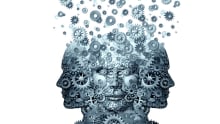Using talent as a differentiator to survive and thrive

The ongoing Fourth Industrial Revolution, underpinned by several disruptive digital technologies, is rapidly transforming industries and business models worldwide, including the ones in the developing countries. As hyper-connectivity and on-demand consumer experiences fundamentally reset customer expectations in a dynamic, unpredictable environment, employment and workplace capabilities are getting redefined like never before.
Job titles and descriptions hitherto unheard of such as “Human-Machine Interaction Designers” or “Blockchain Specialists” are now entering the corporate lexicon. According to The Future of Jobs Report published in 2018 by the World Economic Forum, by 2022, no less than 54 percent of all employees will require significant reskilling and upskilling.
As the demand for newer competencies and aptitudes keeps rising, companies need to revisit their talent management playbook to navigate today’s “New Skills Economy”, as failing to do so will expose organizations to the risk of falling behind competitors and eventually becoming irrelevant to their customers. Organizations will have to not only embrace and adapt to new and emerging talent needs and skillsets required for success, but also overhaul the ways in which they hire and manage talent throughout the employee lifecycle. That’s not all: they will also have to revamp their workflows to address the ever-evolving expectations of the 21st-century worker or risk losing their top talent to competitors better equipped to attract, train and retain their workforce.
The business case for talent management
The business imperative for organizations to transform their talent management capabilities for today’s rapidly evolving digital economy is compelling. Competition for talent today is fierce and organizations lacking the tools and resources to find, get, upskill and keep the desired pool of skilled labor will face significant competitive disadvantages. A recent Gartner study found that 90 percent of chief human resource officers (CHROs) expect the battle for critical talent to intensify over the next 12 months.1 Not surprisingly, almost 70 percent of the world’s 1,600 largest enterprises have added talent management to their list of top priorities to report and discuss in periodic meetings with their investors and shareholders, a clear sign that talent management has indeed become a strategic business imperative.
Organizations must empower their workers with the requisite tools to think creatively and co-create even as they seek to collaborate effectively with machine intelligence
With business agility emerging as a core focus area for the C-suite, companies are looking to enhance workforce productivity, and accelerate upskilling and reskilling. By providing their employees with opportunities to frequently upgrade their skillsets, organizations can not only boost staff engagement but also generate higher and faster ROI. Studies have shown that grooming talent internally is nearly 84 percent less expensive than recruiting an external candidate. Organizations also must transform their talent management approaches to be able to meet the constantly changing expectations of the millennial generation who are more inclined to favor flexible working environments such as working remotely and outside the increasingly archaic nine to five workday. Workers today also desire a growth mindset where they’re provided access to and opportunities for learning and training that allows them to efficiently acquire new skills and competencies in the flow of work and in alignment with their short-term and long-term career goals. Plus, with many workers increasingly inclined to changing jobs more frequently than any other generation before them, companies need to provide greater mobility, flexibility, work satisfaction, and work-life balance in order to avoid the revolving door of onboarding new employees only to have them leave for greener pastures in less than a year.
Talent management as a differentiator
So, how can organizations leverage talent management effectively to navigate the New Skills Economy, differentiate themselves from the competition, and drive innovation for business transformation? Here are eight ways companies can do so:
- Adaptive and personalized learning: Employee reskilling and upskilling must be customized to the unique needs of each individual worker. In order to accomplish this, organizations need a dynamic, learner-centric learning management system (LMS) that delivers “pull”-based, and not just “push”-driven learning. Such a learning environment will also allow individuals to tailor and reconfigure learning modules as they see fit.
HR and learning & development (L&D) functions should harness data analytics and artificial intelligence (AI) to “consumerize” employees’ learning experiences. It is important to note the role LMS design plays to ensure individual skill-building paths are configured based on learners’ interaction with the various modules. An adaptive LMS embedded with self-learning functionalities will analyze the rich, multidimensional data concerning each employee’s needs and consumption patterns to deliver personalized learning experiences. In short, the platform can recommend relevant content in line with a user’s learning history, existing competencies and emerging areas of interest.
Another critical aspect of LMS transformation organizations should keep in mind is content curation. The platform should allow users to find, recommend, sort, and comment on the content they are searching for under one integrated interface. - Microlearning: In addition to providing more personalized training opportunities to employees, organizations should also consider adapting learning content for the bite-size consumption habits of today’s consumers. One way to meet this expectation is to leverage mobile-first design for building “microlearning” modules, which will organize learning into smaller segments that are easy to consume, absorb, and retain – typically five to eight minutes in length. Microlearning, which focuses on summarization of key points, steady reinforcement and performance support, among other things, is becoming increasingly popular. Nearly 55 percent of companies recently polled by CEB said they are implementing microlearning platforms to deliver “snackable” content modules.
- Enhanced user experience (UX) with design thinking: Personalization of an LMS will be a non-starter unless the transformation extends to the user interface. A non-intuitive user experience will only result in suboptimal learning outcomes. This is where embracing design thinking can immensely help organizations either revamp the LMS interface or invest in a more intuitive LMS purpose-built for today’s modern learners.
- Project-specific team configuration: Organizations should evaluate people requirements for a given project as a first step to ensuring the optimal execution approach from a talent requisition perspective. If the current employee pool is well-equipped to deliver on the project mandate in terms of quality, costs and timelines, then it’s good to go. Otherwise, actively weigh tapping existing staffing resources within your organization who may be able to fill the talent gaps. Specialist freelancers are another option to consider when an organization finds it doesn’t have the required talent in house. On-demand workforce mobilization can come in handy for industries such as engineering, healthcare, education and finance that face substantial skill shortages, especially with a burst of project activity that has a clear project timeline from launch to completion.
- Hybrid talent management: Alternatively, organizations can consider using a combination of full-time workers and a contingent workforce. For example, Intel’s Freelance Nation2 program allows skilled talent to sign up for the initiative on a project basis and negotiate their schedules. Such a mechanism combines job stability and freelance autonomy to make workers feel empowered. This approach also allows organizations to adapt nimbly to dynamic business requirements.
- Talent flexibility: Without question, some work projects and tasks are more interesting than others, but there are ways for organizations to build in opportunities for employees to have a certain level of control over the projects they take on. In addition to the traditional approach of assigning work and prioritizing projects by the immediate business needs, organizations should consider providing opportunities for employees to also evaluate a range of projects they can choose to take on based on their personal interests, aspirations and career ambitions as well as their core competencies and across different locations. Having such talent flexibility options in place can go a long way in increasing employee satisfaction and reducing talent attrition.
- Training on emotional and creative intelligence: For all the disruptive impact of automation, AI and machine learning, human skills and judgment will always remain in demand for specific tasks namely, ideation, creativity, problem-solving, and emotional intelligence. As machines take up more of the mundane stuff in streamlining business processes, employees will be freed up to concentrate on value added work where their unique skills will be more important. Therefore, organizations must empower their workers with the requisite tools for them to be able to think creatively and co-create, even as they seek to collaborate effectively with the machine intelligence that is becoming more prevalent in every aspect of our day-to-day lives.
- Leadership training: As the agile demands of the digital businesses continue to flatten the traditional hierarchy of organizations, it becomes vital for organizations of all sizes to democratize leadership. This means recognizing that employees at all level should be equipped to make decisions and execute on them. Building such a culture requires making leadership training available not just for the C-Suite and top executives, but throughout all levels of the organization. Considering that this type of transformation is already taking place organically in many organizations, with individuals across business units already making important decisions without carrying formal leadership titles, it’s crucial for organizations to expand leadership development programs beyond the senior employee cohorts.
Talent management plays a critical role in helping organizations replenish their skills in tandem with a dynamic marketplace and ensuring the innovation engine driving organization success is fueled by a well-trained workforce that’s hungry for continuous learning
Navigating the new skills economy is challenging for organizations of all sizes. But maintaining the status quo and avoiding experimenting with new concepts to unlearn and learn new skillsets – both at the individual and organizational levels – is not an option for any organization that wants to stay relevant and thrive. Consider this as proof that standing still is not an option. Nearly 30 percent of the companies listed on the Dow Jones Industrial Average 15 years ago are no longer part of the coveted U.S. stock market index, with tech-savvy, innovative enterprises having replaced them. This underscores the pressing need for every company today to pursue constant innovation for business sustainability. Talent management plays a critical role in helping organizations replenish their skills in tandem with a dynamic marketplace and ensuring the innovation engine driving organization success is fueled by a well-trained workforce that’s hungry for continuous learning.








